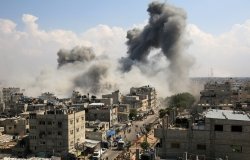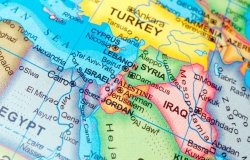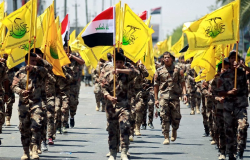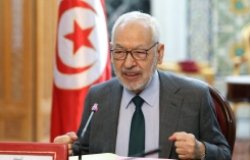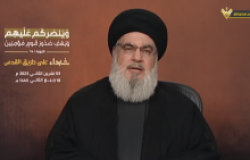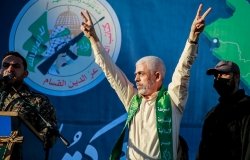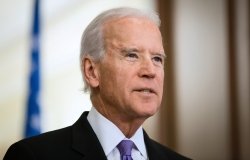US Report: ISIS and Al Qaeda Threats
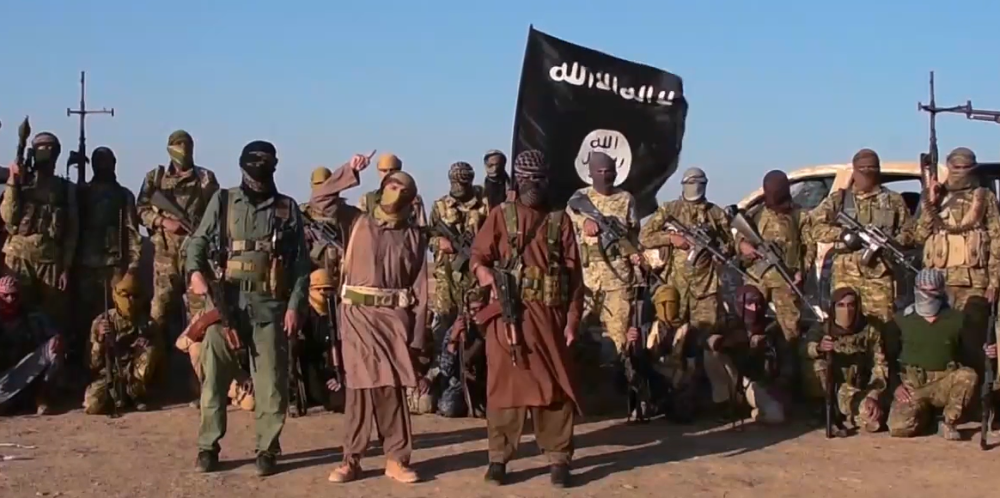
Extracted from an ISIS video message, "Strike [Their] Necks - Wilayat al Iraq" (May 2020)
“Terrorist groups remained a persistent and pervasive threat worldwide,” despite counterterrorism successes by the United States and its partners, according to the State Department’s Country Reports on Terrorism 2020. The Islamic State (ISIS) and al Qaeda largely relied on local affiliates to mount attacks around the world in 2020.
The number of terrorist attacks and related fatalities increased by more than 10 percent in 2020 compared with 2019, Secretary of State Antony Blinken said in statement. “These figures reflect, in part, the spread of ISIS branches and networks and al Qaeda affiliates, particularly in Africa.” In the Middle East and North Africa, jihadi militants found safe havens in ungoverned and contested areas in Egypt, Iraq, Libya, Syria, Yemen and elsewhere.
ISIS: In the Middle East, ISIS continued its low-level insurgency in Iraq and Syria while trying to recruit new members and retake territory. Other ISIS branches, networks, and supporters also remained active in the Arabian Peninsula, Libya, the Sinai Peninsula, Tunisia, and Yemen.
ISIS affiliates outside Iraq and Syria actually caused more fatalities during 2020 than in any previous year, according to the report. ISIS affiliates were especially active in West Africa, the Sahel, the Lake Chad Basin, and northern Mozambique. Nearly 5,000 people died in attacks attributed to ISIS in West Africa alone in 2020.
Al Qaeda: Al Qaeda lost several senior leaders, including:
- Abu Muhammad al Masri, the number two under central leader Ayman Zawahiri, was gunned down in Tehran by unidentified assassins in the summer of 2020.
- Qassim al Rimi, the emir of Al Qaeda in the Arabian Peninsula (AQAP), was killed in a U.S. counterterrorism operation in Yemen in January.
- Abdelmalek Droukdel, the emir of al Qaeda in the Islamic Maghreb (AQIM), was assassinated in a counterterrorism operation conducted jointly by France and local allies in Mali with the help of U.S. intelligence in June.
In the Middle East, AQAP was the most active affiliate, despite the loss of its emir. Senior al Qaeda leaders continue to reside in and around Tehran, the State Department reported. “There has been facilitation of them that allows them to remain active as leaders within the al-Qaida global enterprise,” the acting Coordinator for Counterterrorism John T. Godfrey said at a briefing about the 2020 report. “No secret, I think, that Iran is a longstanding state sponsor of terrorism, and I think the fact that they have enabled that leadership cadre to safely reside in Iran is a reflection of their use of terrorism as an adjunct of their foreign policy goals.”
In Africa, two affiliates also stepped up attacks: Al Shabaab in the Horn of Africa, and Nasr al Islam wal Muslimin in the Sahel. Al Shabaab killed one U.S. servicemember and two U.S. contractors in an attack on a Kenyan military base in January 2020. It was the deadliest attack on U.S. forces in Africa since 2017. The following are excerpts from the report and Secretary Blinken’s Statement.
THE MIDDLE EAST AND NORTH AFRICA
Overview
Significant terrorist activities and safe havens persisted in the Middle East and North Africa throughout 2020. The 83-member U.S.-led Global Coalition to Defeat ISIS continued its comprehensive efforts to prevent a resurgence of ISIS’s so-called physical caliphate in Iraq and Syria and the activities of its branches and networks. Al-Qa’ida and its affiliates, Iran’s Islamic Revolutionary Guard Corps-Qods Force (IRGC-QF), and Iran-backed terrorist groups like Hizballah also remained active throughout the region.
While ISIS remains unable to control territory and its leadership ranks have been significantly degraded, the group remains a serious threat to U.S. interests, security in the region, and beyond. In Iraq and Syria, ISIS fighters continued to wage a low-level insurgency, seeking to destabilize the region, recruit new members, and regain territory. More than 10,000 ISIS fighters, including some 2,000 foreign terrorist fighters (FTFs) remained in Syrian Democratic Forces-controlled detention facilities in northeast Syria. More than 70,000 associated foreign family members, most of them children, remain in humanitarian camps for displaced persons. The COVID-19 pandemic presented logistical challenges to repatriations, but the United States continued to encourage allies to repatriate their citizens and to prosecute or to rehabilitate and reintegrate them, as appropriate. Beyond Iraq and Syria, ISIS branches, networks, and supporters across the Middle East and North Africa remained active, including in the Arabian Peninsula, Libya, the Sinai Peninsula, Tunisia, and Yemen.
In Libya, local security forces conducted ground operations to neutralize threats posed by ISIS and al-Qa’ida in the Islamic Maghreb (AQIM) fighters and facilitators, including a September operation by the self-styled Libyan National Army that eliminated the emir of ISIS in Libya. ISIS-Sinai Province, one of the first ISIS branches to swear allegiance to the new ISIS self-proclaimed caliph following Abu Bakr al-Baghdadi’s death, continued its terrorist campaign in North Sinai. In the Maghreb, separate counterterrorism efforts and operations by Algeria, Morocco, and Tunisia thwarted the activities of ISIS and other terrorist groups. Algerian forces conducted a steady stream of operations to prevent terrorist groups, including AQ and ISIS affiliates, from planning or conducting attacks.
Al-Qa’ida’s leadership ranks in the Middle East and North Africa were significantly degraded, starting with the death of al-Qa’ida in the Arabian Peninsula (AQAP) emir Qassim al-Rimi, killed in Yemen in January. Abu Muhammad al-Masri, al-Qa’ida’s number two, was killed in Tehran in August. Despite these setbacks, al-Qa’ida remained a resilient adversary and actively sought to reconstitute its capabilities and maintain safe havens in the region amid fragile political and security climates, particularly in Egypt, Libya, Syria, and Yemen.
In Yemen, AQAP and ISIS’s Yemen branch continue to linger in the seams between the various parties to Yemen’s civil war, despite pressure from the Houthi’s military campaign in al-Bayda governorate. Both ISIS-Yemen and AQAP suffered leadership losses and claimed a smaller number of attacks inside Yemen in 2020. Globally, AQAP sought to capitalize off the claim it supported the perpetrator of the 2019 shooting at U.S. Naval Air Station Pensacola as well as to exploit the controversy over a French schoolteacher’s depiction of the Prophet Mohammed. The Houthis continue to receive material support and guidance from Iranian entities, including to enable attacks against Saudi Arabia. These attacks have utilized armed drones and ballistic missiles, which damaged airports and critical infrastructure.
Iran continued to use the IRGC-QF to advance Iran’s interests abroad. Iran also continued to acknowledge the active involvement of the IRGC-QF in the conflicts in Iraq and Syria, the latter in support of the Assad regime. Through the IRGC-QF, Iran continued its support to several U.S.-designated terrorist groups, providing funding, training, weapons, and equipment. Among the groups receiving support from Iran are Hizballah, Hamas, the Palestine Islamic Jihad, al-Ashtar Brigades and Saraya al-Mukhtar in Bahrain, and Kata’ib Hizballah and Asa’ib Ahl al-Haq (AAH) in Iraq. Iran also provided weapons and support to other militant groups in Iraq and Syria, to the Houthis in Yemen, and to the Taliban in Afghanistan. Iran-backed militias escalated the pace of attacks on Embassy Baghdad and Iraqi bases hosting U.S. and other Defeat-ISIS forces.
Countries in the Gulf region continued to take important steps to combat terrorism. Following the U.S.-Qatar Strategic Dialogue in September, the two governments committed to shared counterterrorism priorities for 2021, including security preparations for Qatar’s hosting of the FIFA World Cup in 2022, combating the financing of terrorism, and countering violent extremism. Saudi Arabia and the United States continued to co-lead the Terrorist Financing Targeting Center (TFTC), an initiative founded in 2017 to increase U.S.-Gulf multilateral collaboration to counter terrorist financing. In 2020, TFTC members imposed sanctions against six individuals and entities affiliated with ISIS.
In the Levant, several terrorist groups, most notably Hizballah, continued to operate in Lebanon and Syria. Hizballah remained Iran’s most dangerous terrorist partner and the most capable terrorist organization in Lebanon, controlling areas across the country. Iran’s annual financial backing to Hizballah — which in recent years has been estimated to be in the hundreds of millions of dollars — accounts for most of the group’s annual budget. Hizballah’s presence in Lebanon and Syria continued to pose a threat to Israel. Israel continued to warn the international community about Hizballah’s efforts to produce precision-guided missiles (PGMs) within Lebanon, including through media presentations detailing potential production sites. Hizballah has said that it possesses enough PGMs for a confrontation with Israel, but it has denied missiles are being developed in Lebanon. Although Palestinian terrorist groups in Gaza and the West Bank continued to threaten Israel, Israeli and Palestinian Authority security forces continued their coordination in the West Bank in an effort to mitigate violence.
Algeria
Overview: The United States and Algeria built on their counterterrorism (CT) partnership through regular dialogue and exchanges of technical expertise. Algeria continued its significant efforts to prevent terrorist activity within its borders and as a result remains a difficult operating environment for terrorist groups. Algerian armed forces and internal security forces published figures that showed continued pressure on terrorist groups, conducting a steady drumbeat of operations to arrest and eliminate terrorist suspects, dismantle and disrupt terrorist cells, and destroy hideouts, arms, and other equipment. These ongoing operations significantly degraded the capacities of terrorist groups to operate within Algeria. AQIM and ISIS’s Algeria branch remained in the country but were under considerable pressure from Algerian security authorities. The elimination of several leaders and high-profile members of terrorist groups inside and outside of Algeria, particularly AQIM, further diminished their capacity. These groups aspire to impose their interpretations of Islamic law on the region and to attack Algerian security services, local government targets, and Western interests. Terrorist activity in Libya, Mali, Niger, and Tunisia — as well as human, weapons, and narcotics trafficking — contributed to the overall threat, particularly in border regions.
Algeria’s domestic efforts to defeat ISIS through counter-messaging and their capacity-building programs with neighboring states contribute to the Global Defeat-ISIS Coalition mission.
2020 Terrorist Incident: On February 9 an individual conducted a vehicle-borne improvised explosive device (VBIED) suicide attack targeting a military outpost in southern Algeria, near the border with Mali, killing himself and one Algerian soldier. ISIS took credit for the attack, the first of its kind in Algeria since 2017, in retaliation for an earlier Algerian CT operation against the group.
Bahrain
Overview: There were no successful terrorist attacks in Bahrain in 2020, but domestic security forces conducted numerous operations to preempt and disrupt attack planning. Bahrain is a major non-NATO ally, hosts the U.S. Navy’s Fifth Fleet and U.S. Naval Forces Central Command, and participates in U.S.-led security initiatives, including the International Maritime Security Construct to protect commercial shipping in the region. In December the United States and Bahrain launched the inaugural U.S.-Bahrain Strategic Dialogue, which reviewed bilateral cooperation across sectors and surveyed emerging and transnational threats. Bahrain continued to offer its support for countering Iran’s malign activities in the region. Reports of mistreatment, arbitrary and unlawful detention, and security force-perpetrated abuse continued over the rating period. According to international media and NGO reports, confessions have been obtained through torture. The Government of Bahrain initiated numerous programs intended to improve relations between communities and security forces.
2020 Terrorist Incidents: There were no terrorist attacks reported in Bahrain in 2020.
Egypt
Overview: All terrorist attacks in Egypt during the year took place in the Sinai Peninsula. Egyptian counterterrorism efforts continued, as ISIS-Sinai Province conducted regular small arms and IED attacks against security forces, civilians, and critical infrastructure. ISIS-Sinai Province also continued to execute individuals suspected of collaborating with the Egyptian government and military. Throughout the year, the Egyptian security forces reportedly uncovered and destroyed more than 750 weapons caches and killed more than 150 suspected terrorists through a combination of ground assaults, air strikes, and special operation raids, according to a series of official government publications.
Based on open-source reporting, there were an estimated 234 terrorist attacks across the country in 2020, of which the vast majority were claimed by ISIS-SP. In late July, ISIS-SP led a westward offensive that overran and infiltrated villages near Bir al-Abd, 37 miles east of the Suez Canal in the Sinai Peninsula. The offensive and subsequent three-month security operation to reestablish security and remove ISIS-planted booby traps displaced an estimated 10,000 local residents. In October the North Sinai governor released the first official Egyptian government statistics on civilian casualties in the governorate, reporting 1,004 civilian deaths and 2,800 civilian injuries over the past six years. The report did not distinguish whether civilian casualties resulted from terrorism or government CT operations, or from both. The North Sinai governor reported in June paying more than $220 million in compensation for residents harmed by counterterrorism operations from 2015 to 2020.
There were no major attacks outside of the Sinai Peninsula, though terrorist attacks targeting civilians, tourists, and security personnel in mainland Egypt and the greater Cairo region remained a concern, particularly from Harakat Sawa’d Misr (HASM) and al-Qa’ida-allied groups such as Ansar al-Islam. Security forces reported foiling several militant threats, including:
- A HASM plot on National Police Day — the ninth anniversary of the 2011 protests that sparked the Egyptian revolution.
- On April 14 a shootout with militants in the Amiriyah neighborhood of Cairo disrupted a plot against Coptic Orthodox Easter celebrations.
The United Nations Office of the High Commissioner for Human Rights, as well as local and international NGOs, continued to maintain that Egyptian authorities unjustly used counterterrorism and state-of-emergency laws and courts to prosecute journalists, activists, lawyers, politicians, university professors, and critics for exercising freedom of expression.
Iraq
Overview: The primary terrorist threats within Iraq included ISIS remnants and Iran-aligned militia groups, including U.S.-designated Harakat al-Nujaba, Kata’ib Hizballah, and Asa’ib Ahl al-Haq as well as the smaller Iranian-aligned militias claiming to be a part of Iraq’s “resistance.” The Kurdistan Workers’ Party (or PKK), a terrorist group headquartered in the mountains of northern Iraq, also conducted multiple attacks in the Iraqi Kurdistan Region (IKR) that resulted in the deaths of several Kurdish security forces personnel.
Despite its territorial defeat, ISIS continued to conduct operations on a smaller scale, particularly in the North and West, including rural areas with limited presence of the Iraqi Security Forces (ISF). ISIS sought to reestablish footholds in Anbar, Diyala, Kirkuk, Ninewa, and Salah al-Din provinces, especially in the areas of disputed control between the Kurdistan Regional Government and the federal government. Although ISIS maintained its capability to conduct deadly terrorist attacks in Iraq, these attacks resulted in fewer casualties in 2020 than in previous recent years. Attack methods included bombings, indirect fire, IEDs, and ambushes. Iraq remains a pivotal member of the Global Coalition to Defeat ISIS and a participant in all Coalition Working Groups (Foreign Terrorist Fighters, Counter-ISIS Finance Group, Stabilization, and Communications). The Counter Terrorism Service (CTS) conducted more than 253 operations against ISIS during 2020, often with Defeat-ISIS support.
Iraqi counterterrorism functions are principally executed by the CTS, a cabinet-level entity reporting directly to the prime minister, as well as by various security forces under the Ministries of Defense and Interior and the Kurdish Peshmerga. In limited instances, Popular Mobilization Forces (PMF) augment Iraqi Army and CTS-led operations. While all PMF are required by law to operate as part of the ISF, many PMF groups continued to defy central government command and control and engaged in violent and destabilizing activities in Iraq and neighboring Syria, including killing and abducting protesters. Attacks by Iran-aligned militias against U.S. interests increased in 2020, resulting in the killing and wounding of U.S., Iraq, and other Defeat-ISIS service members.
2020 Terrorist Incidents: Terrorists conducted more than 100 IED attacks on Defeat-ISIS-contracted convoys and launched at least 40 indirect fire attacks against U.S. interests in Iraq. The following is a representative list of terrorist incidents:
- On January 4, Iran-aligned militias conducted indirect fire attacks on Embassy Baghdad and Balad Air Base, as well as on Embassy Baghdad on January 21 and 26, resulting in material damage and injuries.
- On March 11, Iran-aligned militias conducted indirect fire attacks on Camp Taji, killing three Defeat-ISIS personnel and wounding others. This was followed by a second rocket attack on Camp Taji on March 14, wounding several Iraqi and other Defeat-ISIS personnel.
- During October 29-30, ISIS conducted extended attacks by sniper and mortar fire on security forces and civilians from nearby orchards in Diyala province.
- On November 9, ISIS conducted an attack at Radhwaniyah Village on the outskirts of Baghdad, killing 11 persons and wounding responding ISF units.
- On December 20, Iran-aligned militias conducted indirect fire attacks on Embassy Baghdad with 20 rockets, resulting in material damage.
Israel, West Bank, and Gaza
Overview: Israel remained a committed counterterrorism partner, closely coordinating with the United States on a range of counterterrorism initiatives. Owing to COVID-19, Israel and the United States held numerous interagency counterterrorism dialogues virtually to discuss and collaborate on regional threats. Counterterrorism issues were also at the center of the agenda during numerous high-level U.S. visits to Israel.
Israel faced threats from the North from Hizballah and along the northeastern frontier from Hizballah and other Iran-backed groups, including as many as 150,000 rockets and missiles aimed at Israel, according to some Israeli estimates. Israeli officials expressed concern that Iran was supplying Hizballah with advanced weapons systems and technologies, including precision-guided missiles. This concern included Iran’s work to assist Hizballah and other proxies in indigenously producing rockets, missiles, and drones.
To the South, Israel faced threats from terrorist organizations including Hamas, Palestinian Islamic Jihad (PIJ), and ISIS-Sinai Province. Rocket attacks originating from Gaza resulted in several injuries and property damage. There were sporadic attempts to infiltrate Israel from Gaza by armed militants, none of which resulted in Israeli casualties. Other sources of terrorist threats included the Popular Front for the Liberation of Palestine (PFLP) and lone-actor attacks.
2020 Terrorist Incidents: In December, Israeli Defense Forces (IDF) Chief of Staff Aviv Kochavi said 2020 registered the lowest number of Israelis killed by terrorism in the country’s history. Nonetheless, Israel still experienced terrorist attacks involving weapons ranging from rockets and mortars to vehicular attacks, small arms, and knives. The following is a representative list of IDF-announced terrorist and ethno-religious attacks:
- In February, Palestinian Sanad at-Turman carried out a ramming attack against IDF soldiers in Jerusalem, injuring 12.
- In April, on the national Memorial Day for Israeli victims of terrorism, a 20-year-old Palestinian stabbed a 62-year-old Israeli woman in Kfar Saba. The assailant was shot by a bystander and was hospitalized in serious condition; the victim was hospitalized in moderate condition.
- In August a 23-year-old Palestinian man from Jenin stabbed a Rosh Ha’ayin man 20 times, leaving him in serious condition.
- Hamas and other terrorist groups including the PIJ launched more than 175 rockets and more than 150 incendiary balloons from Gaza toward Israel, some of which landed in civilian areas. Iron Dome, Israel’s air defense system, intercepted many of the rockets.
Jordan
Overview: Jordan remained a committed partner on counterterrorism and countering violent extremism. As a regional leader in the Global Coalition to Defeat ISIS, Jordan played an important role in Defeat-ISIS successes by preventing the terrorist group from regaining any territorial control and restricting its operational reach.
Though Jordan experienced a decrease in terrorist activity in 2020 compared with previous years, the country faced a continued threat from terror groups. Border security remained an overarching priority for the Jordanian government, given fears that violence from the conflict in neighboring Syria might spill over into its territory. Jordanian security forces thwarted several terrorist plots and convicted numerous people on charges of plotting terrorist attacks. The threat of domestic radicalization to violence, especially online, persisted.
2020 Terrorist Incidents: There were no reported terrorist incidents in Jordan in 2020.
Kuwait
Overview: Kuwait is a major non-NATO ally, an active participant in the Global Coalition to Defeat ISIS, a member of the Defeat-ISIS Coalition Small Group, and co-leads (with Turkey and the Netherlands) Defeat-ISIS’s Foreign Terrorist Fighters Working Group. The Government of Kuwait has frequently participated in or conducted training programs to build counterterrorism and counterterrorism financing capabilities.
2020 Terrorist Incidents: There were no reported terrorist incidents in Kuwait in 2020.
Lebanon
Overview: Lebanon is a committed partner in the Global Coalition to Defeat ISIS. In 2020 the United States provided security assistance and training to the Lebanese Armed Forces (LAF) and worked with Lebanon’s law enforcement organizations, such as the Internal Security Forces (ISF), to enhance their counterterrorism capabilities and investigate and prosecute local terrorism cases.
Terrorist groups operating in Lebanon included U.S.-designated FTOs such as Hizballah and ISIS.
On September 29, Israel publicly released information about Hizballah’s efforts to manufacture precision-guided missiles (PGMs) in three residential areas of Beirut. Hizballah denied that these locations were PGM factories. In remarks on December 27, Hizballah leader Hassan Nasrallah claimed the terrorist group had doubled the size of its PGM arsenal in 2020.
Despite the Lebanese government’s official policy of disassociation from regional conflicts, Hizballah continued its illegitimate military activities in Iraq, Syria, and Yemen. Separately, Lebanon’s 12 Palestinian refugee camps remained largely outside the control of Lebanese security forces and posed a security threat owing to the potential for militant recruitment and terrorist infiltration. In addition, several individuals on the FBI’s most wanted list or listed by the Department of State or Department of Treasury as Specially Designated Global Terrorists reportedly remained in Lebanon.
2020 Terrorist Incidents: Hizballah continues to plan attacks and engage in other illicit activities around the world. The following is a representative list of terrorist incidents in Lebanon:
- On September 27, two LAF soldiers were killed and another injured when two terrorists of unspecified affiliation opened fire on an LAF sentry post in the Minieh region of northern Lebanon. One terrorist escaped, but another was killed by the LAF and subsequently found to be wearing a suicide vest.
- On August 21, militants led by ISIS-affiliated terrorist Khaled al-Talawi killed two police officers and one civilian in the northern Lebanese town of Kaftoun. The LAF subsequently apprehended and killed al-Talawi on September 13 near Tripoli; four LAF soldiers were killed in that raid. On September 26, LAF and ISF units engaged militants linked to al-Talawi in the Wadi Khaled region of northern Lebanon, killing 14 terrorists and arresting 15 others.
- On August 25 the Israeli Defense Forces claimed that Hizballah fighters fired small arms across the Blue Line toward an IDF position in the Israeli town of Manara.
Libya
Overview: Libyan government officials continued to work with U.S. counterparts to combat terrorism, although civil conflict and fractured security institutions limited direct cooperation. Following the failure of the self-styled Libyan National Army’s (LNA’s) military assault on western Libya, military officials from the Government of National Accord (GNA) and the eastern-based LNA signed a ceasefire agreement October 23. Despite the ceasefire, the volatility of Libya’s security and political dynamics allowed room for terrorist groups such as ISIS and al-Qa’ida in the Islamic Maghreb (AQIM) to regroup. While ISIS-Libya controls no territory in Libya and is significantly degraded in terms of numbers and capacity, it remains a threat. The GNA was a reliable and willing U.S. counterterrorism partner, although its capacity to eliminate terrorist safe havens, counter terrorist financing, deter the flow of foreign fighters, or ensure effective counter proliferation efforts across Libya’s territory was limited. The LNA countered terrorism in the East and South of the country, but its counterterrorism gains were limited to areas under its direct control. At the end of 2020, UN-facilitated talks were underway to select a new, unified interim executive authority.
2020 Terrorist Incidents: Significant terrorist incidents included the following:
- In May, ISIS-Libya claimed responsibility for a VBIED attack against a security checkpoint in Taraghin, 600 miles south of Tripoli, marking the first attack by ISIS-Libya in more than a year.
- From May through June, ISIS-Libya claimed eight attacks in southern Libya targeting the LNA and civilians, including an apparent rocket attack on a local airbase. The claims were published in the Islamic State’s weekly newsletter.
- In September an unknown group conducted a suicide bomb attack in western Tripoli, reportedly causing no casualties. No group claimed responsibility.
Morocco
Overview: The United States and Morocco have a long history of strong counterterrorism cooperation. The Government of Morocco continued to implement its comprehensive strategy, which includes vigilant security measures, regional and international cooperation, and terrorist counter-radicalization policies. In 2020, Morocco’s counterterrorism efforts largely mitigated its risk of terrorism — even as the numbers of arrests dropped significantly compared with 2019, likely because of COVID-19-related shutdowns. The country continued to face sporadic threats — largely from small, independent terrorist cells — most of which were claimed to be inspired by or affiliated with ISIS. Morocco is also a member of the GCTF and is currently the co-chair of the GCTF with Canada.
2020 Terrorist Incidents: There were no reported terrorist incidents in Morocco in 2020.
Oman
Overview: Oman is an important regional counterterrorism partner that actively worked to prevent terrorists from conducting attacks or using the country as a safe haven. The nation remains concerned about the Yemen conflict and the potential for AQAP and ISIS-Yemen to threaten Oman’s land and maritime borders. Omani and U.S. officials regularly engaged on efforts to counter violent extremism and terrorism. Oman sought training and equipment from the U.S. government, commercial entities, and other countries to support its efforts to control Omani land, air, and maritime borders. The country welcomed U.S. security assistance to improve its crisis management capacity, as well as its counterterrorism tactics and procedures; however, some counterterrorism training and exercises were postponed or cancelled because of the COVID-19 pandemic. Oman issued several statements condemning terrorist attacks around the world in 2020.
2020 Terrorist Incidents: There were no reported terrorist incidents in Oman in 2020.
Qatar
Overview: The United States and Qatar continued to increase counterterrorism cooperation, building on progress made after the U.S. Secretary of State and Qatari Foreign Minister signed a CT MOU in 2017. During the September U.S.-Qatar Strategic Dialogue’s Virtual Counterterrorism Session, the two governments reviewed the significant progress made on CT cooperation and committed to maintaining ongoing momentum for 2021. Qatar is an active participant in the Global Coalition to Defeat ISIS and all the Defeat-ISIS working groups. Qatar facilitated U.S. military operations in the region and hosts roughly 10,000 U.S. service members at two military installations critical to Defeat-ISIS efforts.
2020 Terrorist Incidents: There were no reported terrorist incidents in Qatar in 2020.
Saudi Arabia
Overview: Saudi Arabian government officials continued to work closely with their U.S. counterparts to deploy a comprehensive and well-resourced CT strategy that included vigilant security measures, regional and international cooperation, and counterterrorist radicalization measures. Houthi militants in Yemen posed the greatest security threat to Saudi Arabia. Houthi attacks increased in frequency and sophistication over the year, to include attacks with ballistic and cruise missiles, unmanned aerial systems (UAS), and unmanned surface vessels (USV). Saudi operations in Yemen included counterterrorism missions against AQAP and ISIS-Yemen.
Saudi Arabia was a full partner and active participant in the Global Coalition to Defeat ISIS and provided significant operational and logistical support for Defeat-ISIS activities in Syria and Iraq.
2020 Terrorist Incidents: Saudi Arabia suffered numerous cross-border attacks in 2020, including nearly weekly Houthi attacks against targets in southern and western Saudi Arabia using ballistic missiles, cruise missiles, UAS, USV, and floating mines. Terrorist incidents also included small-scale attacks perpetrated by ISIS sympathizers. Significant terrorist incidents included the following:
- On September 10, Houthi militants attacked Riyadh using ballistic missiles and multiple UAS. No deaths or casualties were reported.
- On November 11 an IED wounded at least three persons in an attack on a ceremony organized by the French consulate in a non-Muslim cemetery in Jeddah. ISIS sympathizers were responsible for the attack.
- On November 23, Houthi militants struck a Saudi Aramco petroleum storage facility in Jeddah. The land attack cruise missile strike damaged a 550,000-barrel diesel storage tank. No casualties were reported.
- On November 25 a USV attack damaged a Greece-flagged oil tanker at an Aramco fueling terminal in Shuqaiq, in southern Saudi Arabia. Authorities did not report any casualties.
- On December 14 a USV attacked a Singapore-flagged oil tanker at an Aramco fueling terminal. The attack caused significant damage and some injuries.
Tunisia
Overview: Counterterrorism and border security continued to be top priorities of the Government of Tunisia. The risk of terrorist activity remained high, exacerbated by sustained instability in Libya, although the frequency and scale of terrorist attacks in 2020 decreased from 2019. Tunisian strides in professionalizing its security apparatus in partnership with the United States and its commitment to joint Ministry of Interior (MOI) and Ministry of Defense (MOD) CT operations have steadily degraded violent extremist organizations’ capacity within the country. Despite COVID-19 challenges’ affecting national resources, Tunisia demonstrated consistent security force readiness and carried out proactive CT operations throughout the year. Tunisia continued work on implementation of a national preventing/countering violent extremism (PVE/CVE) strategy and the freezing of terrorist assets and, as evidenced by the responses to the terrorist attack near Embassy Tunis and to the Sousse attack, demonstrated improvements in CT crisis response, coordination, and investigation.
2020 Terrorist Incidents: The following is a representative list of terrorist incidents:
- On March 6, two Tunisians on a motorbike carried out a suicide attack targeting a police checkpoint near the perimeter of Embassy Tunis. The attack killed one police officer and injured five other security personnel as well as a Tunisian civilian.
- On September 6, three Tunisians carried out a combined vehicular attack and stabbing, targeting two National Guard officers on patrol in Sousse. MOI forces killed the three attackers, and security officers subsequently arrested 11 individuals for suspected ties to the operation.
- On December 20 a shepherd was found beheaded near the Algerian border region of Jebel Salloum in west-central Tunisia. According to local media, Jund al-Khilafah-Tunisia (JAK-T), the ISIS branch in Tunisia, killed the man for being a suspected security forces informant.
United Arab Emirates
Overview: The United Arab Emirates advanced counterterrorism efforts in 2020, particularly in the field of countering terrorist financing. U.S.-UAE security agencies continued to finalize a new information sharing memorandum of cooperation to make travel safer. The UAE seeks to be a leader in countering violent extremist narratives on a global level, supporting CVE and participating in and hosting international fora to promote tolerance and coexistence. The government continued to apply restrictive laws as part of its security and counterterrorism efforts. NGOs and other observers criticized these laws as overreaching and as having the potential to stifle political speech. The UAE continued valuable support for counterterrorism efforts in Yemen against AQAP and ISIS-Yemen, including support to local forces in CT operations.
2020 Terrorist Incidents: There were no reported terrorist incidents in the UAE in 2020.
Yemen
Overview: AQAP, ISIS-Yemen, and Iran-backed terrorist groups such as Hizballah and the IRGC-QF continued to exploit the political and security vacuum created by the ongoing conflict between the Republic of Yemen government under the leadership of President Abd Rabu Mansour Hadi, internationally recognized as the legitimate Government of Yemen, and Houthi militants, as well as the ongoing south-south conflict between the Republic of Yemen government and the Southern Transitional Council (STC). Additionally, IRGC-QF continued to exploit the conflict to expand Iran’s influence in Yemen. UN and other reporting have highlighted connections between the IRGC-QF and the Houthis, including the provision of lethal aid used by the Houthis to undertake attacks against critical infrastructure sites in Saudi Arabia. Media reports suggest that Hizballah may also be supporting the Houthi militants.
The Republic of Yemen government, in partnership with the Saudi-led coalition, controlled less Yemeni territory at the end of 2020 than it did in 2019. The Republic of Yemen government’s loss of control over additional parts of its territory resulted from political and military tensions in the South and Houthi advances in other governorates of the country. In the South the STC temporarily declared “self-administration” between April and July, which was not recognized by the international community. Negotiations to implement the 2019 Riyadh Agreement culminated in the December 30 return of a newly formed government to Aden, but this failed to eliminate tensions in the South, where AQAP and ISIS-Yemen maintained significant areas of influence. Concurrently, Houthi militants who controlled the de jure capital of Sana’a and surrounding northwest highlands, as well as the port city of Hudaydah, made key advances eastward and southward to parts of the governorates of al-Jawf, al-Bayda, and Ma’rib.
The Republic of Yemen government cooperated with the U.S. government on CT efforts; however, because of the instability and violence, as well as its own degraded capabilities, the Republic of Yemen government could not fully enforce CT measures or reliably undertake operations across the country. A large security vacuum persists, which provides AQAP and ISIS-Yemen room to operate. Although there were few CT gains in 2020, Yemeni security forces undertook a successful raid against suspected AQAP members in al-Mahra’s capital, al-Ghayda, on October 2, resulting in the death of three suspected terrorists and the arrest of two others. Security Belt Forces loyal to the STC continued to play an important role in CT efforts, as they exercised control over significant parts of Aden, Abyan, and Shabwah. ISIS-Yemen remained considerably smaller in size and influence compared with AQAP but remained operationally active and continued to claim attacks. AQAP remained active in central Yemen, most notably in al-Bayda, demonstrating its ability to move within the country.
2020 Terrorist Incidents: Attacks attributed to AQAP and ISIS-Yemen decreased in 2020, compared with 2019. Methods included suicide bombings, vehicle-borne IEDs, ambushes, armed clashes, kidnappings, and targeted assassinations. Notable terrorist incidents included the following:
- On August 15, AQAP militants executed and then crucified a dentist in al-Bayda governorate and later bombed his clinic. AQAP accused him of participating in an alleged espionage network on behalf of the U.S., Saudi, and Emirati governments and the Houthi militia.
- On August 27, AQAP militants executed six persons in al-Bayda. AQAP accused the victims of belonging to the Houthi militia.
- On December 7, suspected AQAP militants killed six persons affiliated with the STC in Abyan governorate.
Secretary of State Antony Blinken
Dec. 16, 2021
The Department of State has issued the 2020 Country Reports on Terrorism (CRT), which provides a detailed look at the counterterrorism environment last year, fulfilling an important Congressional mandate. Each year, the CRT provides insight on important issues in the fight against terrorism and helps the United States make informed decisions about policies, programs, and resource allocations as we seek to build counterterrorism capacity and resilience around the globe.
Amid a constantly changing threat landscape, the CRT provides an overview of how we are marshalling international efforts to counter terrorism. Among the many accomplishments highlighted in the 2020 report are our efforts to expand the focus of the Global Coalition to Defeat ISIS to address new regions of concern, the first terrorist designation of a Racially or Ethnically Motivated Violent Extremist (REMVE) group, and the growing number of countries that have recognized the whole of Hizballah as a terrorist organization.
The CRT also offers a frank assessment of the challenges we face. The report’s Annex of Statistical Information shows that both the number of terrorist attacks and the overall number of fatalities resulting from those attacks increased by more than 10 percent in 2020 compared with 2019. These figures reflect, in part, the spread of ISIS branches and networks and al-Qa’ida affiliates, particularly in Africa. The rising threat from REMVE groups, including those promoting the superiority of the white race, is addressed in a new section of the report for the first time.
As the United States adapts its counterterrorism approach to keep pace with evolving threats, the CRT continues to serve as a valuable resource in assessing the global terrorism landscape.
My thanks to the State Department employees in Washington and around the world who contributed to the 2020 Country Reports on Terrorism and work tirelessly to protect Americans from terrorist threats.
Related Program

The Islamists
Learn more about Hamas and how it relates to similarly aligned organizations throughout the region. Read more


